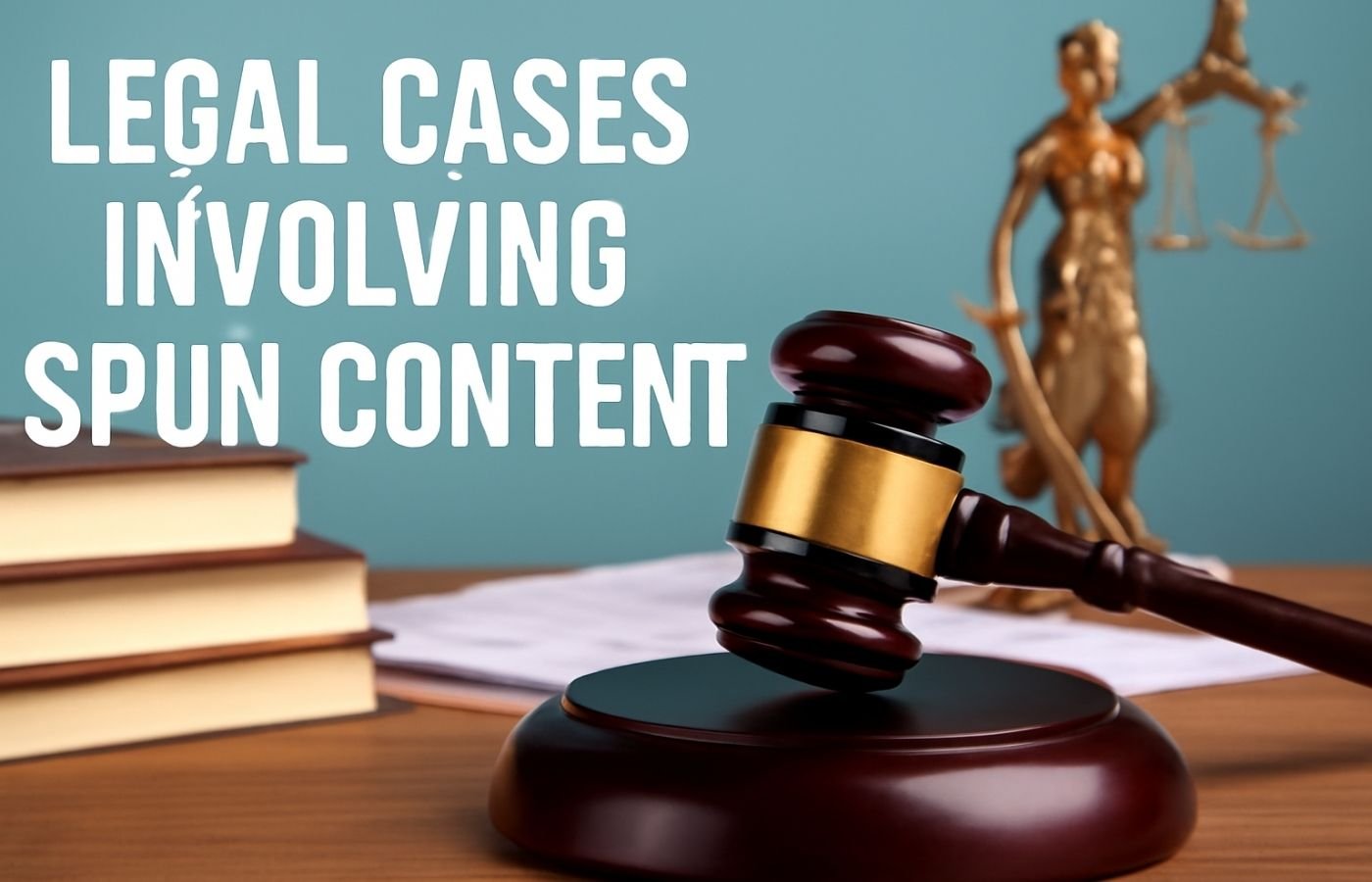What is Spun Content?
Spun content refers to text that has been rewritten or reworded from an existing source. The purpose of spinning content is to create what appears to be unique articles while using a tool or software to automate the process of changing words, phrases, or sentences. The result is a new version of the original content that is intended to pass as original.
What is article spinning in SEO?
In the world of SEO (Search Engine Optimization), article spinning is often used to generate large volumes of content quickly for link building or other ranking purposes. While it might sound like a convenient solution, it can result in poor quality content that is not beneficial to readers.
Is Article Spinning Legal?
One of the most frequently asked questions in the content world is, “Is article spinning legal?” The legality of article spinning depends on several factors, including the methods used and the intentions behind the content. Article spinning can be legal if it is done ethically, by transforming content into a new format or offering new insights. However, if spun content closely resembles the original, it may violate copyright laws.
Legal Issues with Spun Content
Copyright Infringement
The primary legal concern with spun content is copyright infringement. When content is spun and presented as original without adding significant value or transformation, it can violate the original creator’s copyright. The law protects creative works, and using someone’s intellectual property without proper permission can result in legal action.Plagiarism
Spun content that is merely reworded without changing the core idea can also be seen as plagiarism. This is particularly concerning in academic or journalistic fields where originality is paramount. Even though the content may be technically unique, it still borrows too heavily from the original work, which constitutes plagiarism.Deceptive Practices
Article spinning can also be seen as a deceptive practice, especially in digital marketing. When businesses or marketers use spun content to trick search engines into ranking their pages, this can be considered an unfair tactic. It can lead to legal consequences if proven to be done with fraudulent intent.
The Risks of Spun Content in SEO
Spun content is often used in SEO strategies, but the risks associated with it far outweigh the potential benefits. Here’s why:
Google Penalties: Search engines like Google have strict guidelines against low-quality content, including spun content. When Google detects spun content, it may penalize the website by lowering its ranking or even removing it from search results. This can significantly harm a website’s visibility and traffic.
Negative User Experience: Even if spun content manages to avoid penalties, it often lacks readability. The end result is poorly written content that may frustrate readers. Websites that provide poor-quality content risk damaging their brand reputation and losing credibility with their audience.
Legal Consequences: As we will see in the next section, legal cases involving spun content have resulted in costly lawsuits, fines, and reputational damage for businesses. It’s crucial to be aware of the legal risks before resorting to spinning content as an SEO tactic.
Legal Cases Involving Spun Content
Numerous legal cases have involved spun content, shedding light on the potential risks associated with this practice. Here are some notable examples:
Case Study 1: Content Scraping and Copyright Violation
One of the most famous legal cases involving spun content was a lawsuit filed by a content creator against a company that used scraped and spun content. The plaintiff argued that the defendant had taken their original articles, spun them, and republished them on their website. This resulted in a copyright infringement case.
The court ruled in favor of the plaintiff, stating that the defendant’s actions were a violation of copyright law. The ruling emphasized that while article spinning tools may be legal in some contexts, the practice becomes illegal when it involves direct infringement on another person’s intellectual property.
Key Takeaway:
Using spun content to manipulate search engines or steal content can lead to significant legal consequences, including fines and forced removal of content.
Case Study 2: Plagiarism Lawsuit Against a Content Marketer
In another case, a content marketer used spun articles to rank several of their client’s websites. The marketer was sued by a third-party content provider who claimed their original work had been plagiarized. The spun content was almost identical to the original articles, and the court found that it was not sufficiently transformative to avoid being considered plagiarism.
The content marketer was required to pay damages, and the case set a precedent for determining the limits of fair use in content spinning.
Key Takeaway:
Spun content that does not significantly transform the original work can lead to plagiarism charges, even if the text is technically unique.
Case Study 3: Trademark Infringement via Spun Content
Another interesting case involved a company that used spun content to create multiple landing pages for their products. One of their spun articles unintentionally included the trademarked name of a competitor’s product. This led to a trademark infringement lawsuit.
The defendant argued that the use of spun content was unintentional, but the court ruled that the company was still responsible for ensuring the accuracy and originality of their content. As a result, they were fined for trademark infringement and forced to revise their content.
Key Takeaway:
Even when content spinning is done unintentionally, businesses must be careful not to infringe on trademarks, as this can lead to costly lawsuits and penalties.
Case Study 4: Google Penalties for Manipulative Content
Google, the world’s leading search engine, has strict policies against manipulative SEO practices, including the use of spun content for ranking purposes. Several businesses have faced penalties for using spun content to try and game the system.
In one case, a company using automated content spinning tools saw a sharp drop in their search engine rankings after Google detected the use of spun articles. Google’s algorithm penalized the website for providing low-quality, deceptive content.
Key Takeaway:
Google and other search engines penalize websites that use spun content to manipulate rankings. This can lead to a dramatic loss of traffic and damage to a website’s reputation.
How to Avoid Legal Issues with Spun Content
To avoid the legal pitfalls of spun content, businesses and content marketers should follow these best practices:
Create Original Content
The best way to avoid legal issues is to create original content from scratch. This ensures that the content is unique and does not infringe on the copyrights of others.Use AI Tools Ethically
AI-based writing tools can help generate ideas and assist with content creation, but they should not be used to simply reword or spin existing content. Ensure that the AI-generated content adds value and is transformed into something truly unique.Check for Plagiarism
Always use plagiarism detection tools to check if your content closely matches any existing articles. This will help ensure that your content remains original and avoids any potential legal issues.Consult Legal Experts
If you are unsure whether your content might infringe on copyright or trademarks, consult with a legal expert in intellectual property law. They can provide guidance on what is considered fair use and how to avoid legal complications.Follow Google’s Guidelines
Adhere to Google’s Webmaster Guidelines, which emphasize the importance of creating high-quality, unique, and user-friendly content. Avoid any tactics that attempt to manipulate search engine rankings.
Conclusion
Spun content may seem like a shortcut for SEO success, but the legal risks far outweigh the benefits. From copyright infringement to penalties from search engines like Google, businesses must be cautious when using article spinning techniques. By focusing on creating original, high-quality content and following ethical SEO practices, you can protect your business from potential legal issues and maintain a strong online presence.
Key Takeaway: The key to success in digital marketing is producing content that provides value to readers and adheres to legal and ethical standards. Avoiding spun content and focusing on originality will not only help you stay compliant with the law but also build a more reputable online presence.

Raj blends SEO mastery with real-world freelance grit. From keyword to conversion, his expert writing helps readers and businesses win in today’s digital battlefield. Authentic. Sharp. Proven.

